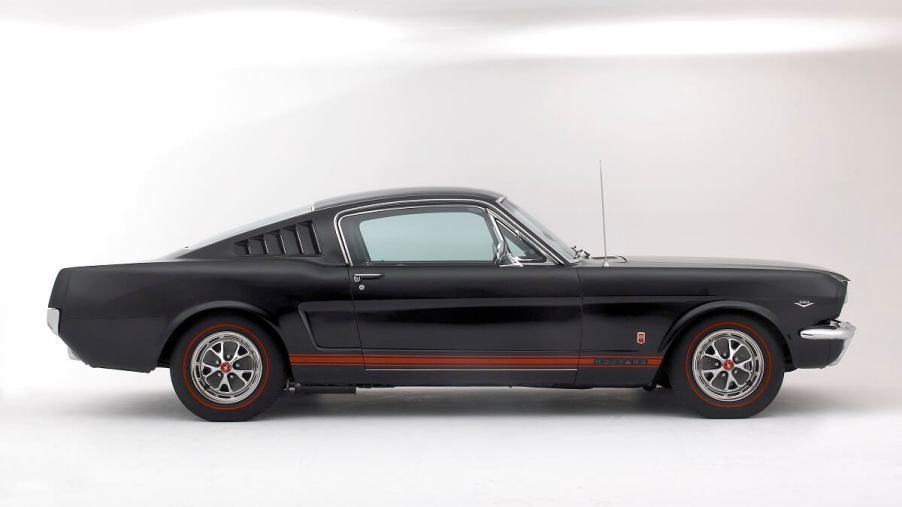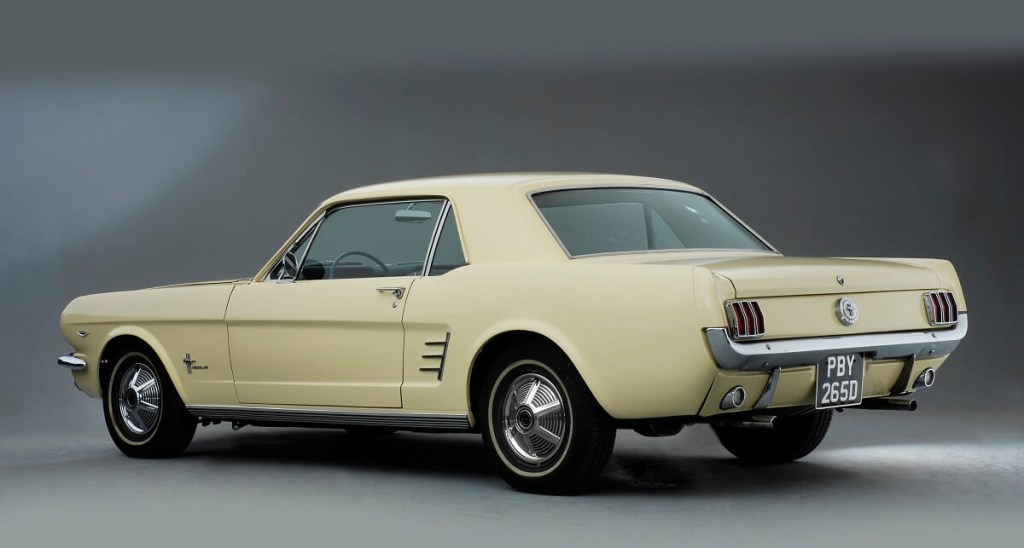
Classic Mustangs: Important Things To Know About First-Generation Ford Mustangs
In this article:
The first-generation Ford Mustang is one of the most common classic cars in the United States. As a result, it’s a natural inclination for collectors to consider an old-school pony car. However, there are a few things car buyers should know about the first-generation model before picking up their classic Mustang.
What is considered a first-generation Mustang?

The first-generation Ford Mustang covered all models from 1964 to 1973. 1965 was technically the first model year for the classic pony car. However, Ford started rolling out the wildly successful nameplate in 1964, hence what fans refer to as the “1964 ½ Ford Mustang.”
Better yet, Ford produced 559,451 Mustangs in 1965 alone, more than the Blue Oval has sold from 2016 to today. As a result, there is no shortage of first-gen coupes, convertibles, and fastbacks for collectors to acquire. Further, first-gen Mustangs, especially coupes, are much more affordable than direct competitors like the first-generation Camaro.
What should you know before buying a classic Mustang?
The most important thing for car hunters to consider when choosing a classic Ford Mustang is the model’s engine code. Some sought-after codes, like Hi-Po 289 models from the mid-1960s, are routinely selling for over $40,000. However, inline-six-powered coupes are much more affordable.
Furthermore, collectors who want to treat a classic Ford Mustang as an asset will have to opt for a numbers-matching example. Vehicles with original factory transmission, engine, and body combinations tend to hold their value longer.
Which Mustang code is the best?
Classic Ford Mustang engine codes, like the C-Code and K-Code cars, refer to specific mills that shoppers could opt for when purchasing their then-new first-generation Mustang. Codes range from A to Z, skipping a few letters on the way.
| Code | Engine size (cubic inches) |
|---|---|
| A | 289 |
| C | 289 |
| D | 289 |
| F | 260, 302 |
| G | 302 |
| H | 351 |
| J | 302 |
| K | 289 |
| L | 250 |
| M | 351 |
| Q | 428, 351 |
| R | 428, 351 |
| S | 390 |
| T | 200 |
| U | 170 |
| W | 427 |
| X | 390 |
| Z | 429 |
The engine codes cover everything from the anemic 170 cubic-inch inline-six-cylinder engine and its barely triple-digit horsepower to the big-block 429 cubic-inch V8 of 1969 and 1970. If you’re looking for a collectible classic Mustang, knowing your codes can come in handy.
However, if you’re looking to make a restomod, hot rod, or daily driver out of a classic pony car, the codes are less important. For instance, a K-Code 1964 ½ to 1967 Ford Mustang might have sported a 271-horsepower 289 V8 and performance handling package, but the aftermarket can turn a U-Code Mustang into a much more competent handler. For instance, retailers sell stiff coilover suspension kits, big brake kits, and crate fuel-injected 302 V8s that could transform a classic ‘Stang.
How much does a classic Mustang cost?
A classic Ford Mustang can cost anywhere from $4,500 to $4 million. For instance, the “Ken Miles R-Model” GT350R sold for $4,070,000, making it one of the most expensive Mustangs ever to sell at auction. However, average sales put the value of a first-gen Mustang at about $54,645.
Keep up with MotorBiscuit for the latest classic car content!



